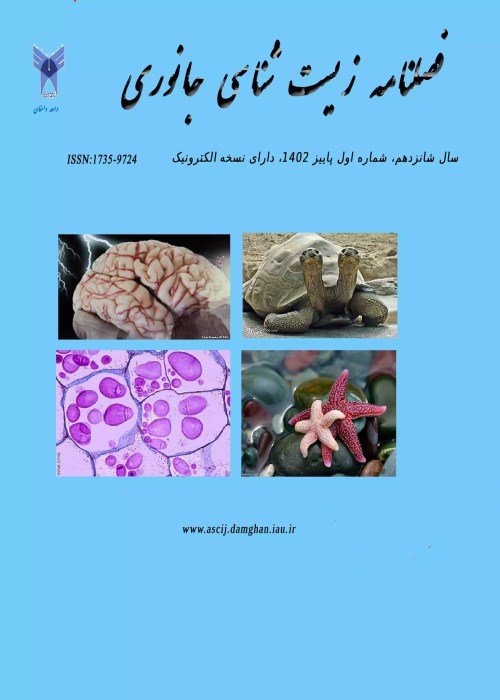Morphological and Histological Observations on the Testes of Paradactylodon gorganensis
Author(s):
Abstract:
In general, the testes in the Hynobiidae Family are slender. In urodeles, the testis is organized in lobes of increasing maturity throughout the cephalocaudal axis. The anuran testis is organized in tubules. Spermatogenesis occurs in cysts composed by Sertoli cells enveloping germ cells at synchronous stages. Moreover, in numerous species germ cell progression lasts a year which defines the sexual cycle. Due to the above quoted features, research on factors regulating germ cell progression in amphibians may reach greater insight as compared with mammalian animal models .In the present research for the first time identification and structural description of stage in spermatogenesis in Paradactylodon. In order to fulfill this purpose 16 specimens of Paradactylodon gorganensis were captured and transferred to laboratory. In species is only found in the Shir-Abad Cave and the stream flowing from it, 60 km east of Gorgan (36 57' N, 55 01' E), in the eastern part of the Elburz Mountains, in the Golestan Province, northern Iran. After macroscopic analyses and obtainment of the testicular fragments, the material was submitted to the histological routine to inclusion in paraffin and coloration with haematoxylin/eosin. Anatomical studies showed that, in this species testis is slender and milk-white and average length and diameter of active testis were 32.76 mm and 4.77 mm. In microscopic analyses studies showed that ,in this species testis is ampular and spermatogenesis occurs in cysts which develop within seminiferous lobules and each one of these units clusters cells in the same stage of differentiation and with a synchronism development, common characteristic in the amphibians .In the germ tissue the primary spermatocyte (mean 5.511 ± 0.537 μm) are biggest spermatogenetic cells. With the cellular differentiation and proliferation, succeeded the other cellular types (spermatogonia, spermatocytes II, spermatids I and II, and spermatooza) with a cystic organization, that is, groups of cells associated with Sertoli cells, forming the spermatogenetic cysts or spermatocysts. The spermatogenetic lineage cells were differentiated and identified according to the cellular and cystic morphology.
Keywords:
Language:
Persian
Published:
Journal of Animal Biology, Volume:11 Issue: 2, 2019
Pages:
55 to 63
magiran.com/p1957656
دانلود و مطالعه متن این مقاله با یکی از روشهای زیر امکان پذیر است:
اشتراک شخصی
با عضویت و پرداخت آنلاین حق اشتراک یکساله به مبلغ 1,390,000ريال میتوانید 70 عنوان مطلب دانلود کنید!
اشتراک سازمانی
به کتابخانه دانشگاه یا محل کار خود پیشنهاد کنید تا اشتراک سازمانی این پایگاه را برای دسترسی نامحدود همه کاربران به متن مطالب تهیه نمایند!
توجه!
- حق عضویت دریافتی صرف حمایت از نشریات عضو و نگهداری، تکمیل و توسعه مگیران میشود.
- پرداخت حق اشتراک و دانلود مقالات اجازه بازنشر آن در سایر رسانههای چاپی و دیجیتال را به کاربر نمیدهد.
In order to view content subscription is required
Personal subscription
Subscribe magiran.com for 70 € euros via PayPal and download 70 articles during a year.
Organization subscription
Please contact us to subscribe your university or library for unlimited access!


